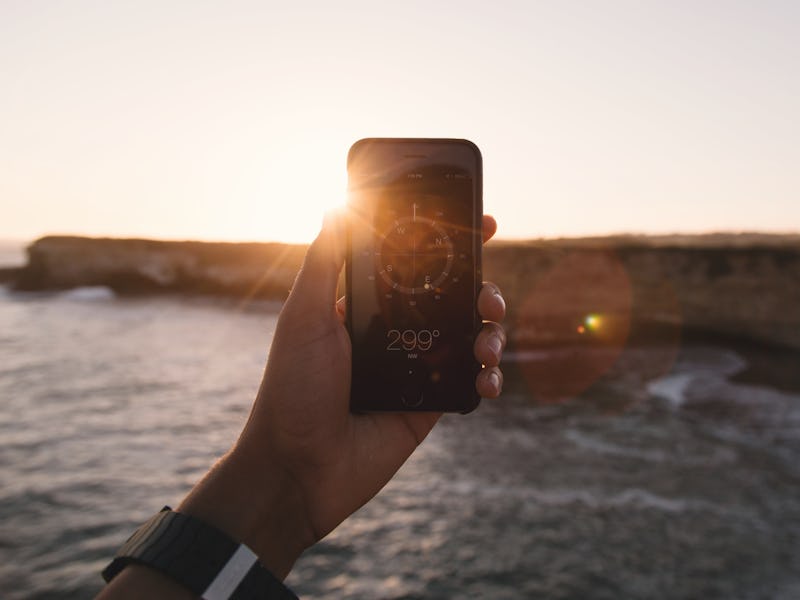How to Watch the Eclipse With Your Phone and Not Sunburn Your Eyes
It's not totally safe.

For those of us who waited too long to snag a pair of safe, legit solar-viewing glasses, using a phone as an intermediary to view the eclipse sounds like a clever, accessible hack. But it’s a bad idea to try it unless you’re aware of the risks to your phone and your eyes, and you take the proper precautions to avoid them.
Let’s start with your phone. Like your eyes, it’s not built for the rare and strange occurrence of a solar eclipse. If you point your phone at the full, bright sun, it will immediately respond by darkening the entire view, just as your eyes are averse to staring directly at the sun. But the dimming of the sun during a partial eclipse can confuse your phone, too, and cause your phone screen to burn too brightly where there is a sliver of sun. This can cause damage to your phone, including the burning out of pixels on your screen.
How risky this is really depends on what phone you own (Androids seems to be more prone to damage, iPhones less so) and how long you expose said phone to the eclipse. You can keep your phone safe the same way you keep your eyes safe — by placing an appropriate solar filter over the lens. Although, if you have one of these handy, you might as well use it to look directly at the sun rather than use your phone as an intermediary. If you are trying to document the event, that’s great, although most of us would be better served by leaving the eclipse photography to the pros and just trying to enjoy it as much as possible in the moment.
In the age of the selfie amidst a noteworthy event, it’s tempting to want to selfie. But that’s not only risking your phone — it’s potentially tempting fate for your delicate eyes. If you hold your phone out in front of you to snap a pic, there’s a good chance you won’t cover the entire sun the whole time you’re taking the picture, and you could look directly at the sun by mistake. You can sunburn your unprotected retinas within seconds, as you won’t have the same instinct to look away as you would with bright sunlight.
It may seem safer to use the front-facing camera and take a proper selfie with the sun behind you, but this is risky, too. The risk here is that you will reflect the sun’s light into your eyes off the glass of your phone’s screen, which is nearly as bad as looking straight at it. Sir Isaac Newton burned his eyes looking at an eclipse in the reflection of a pond, for example.
You could use a blank piece of paper to track the location of the sun’s reflection so you can avoid it, but, again, if you’re not careful it would be easy to forget since this sliver of light might not be bright enough to catch your attention.
It’s safe to look directly at the total eclipse when the moon fully blocks out the sun if you are in the path of totality. This is fine for your eyes and your cameras without any special equipment. But be careful to look away and replace solar filters the moment the sun returns, or ideally a few seconds before.
If you experience blurry vision or the image of the sun “burned” into your view, you’ve gone too far, and you should probably head straight to the emergency room. The damage may heal, but it’s a surefire way to ruin a good eclipse party.
See Also: Here’s How to Make a Pinhole Viewer So You Don’t Have to Buy Another Thing